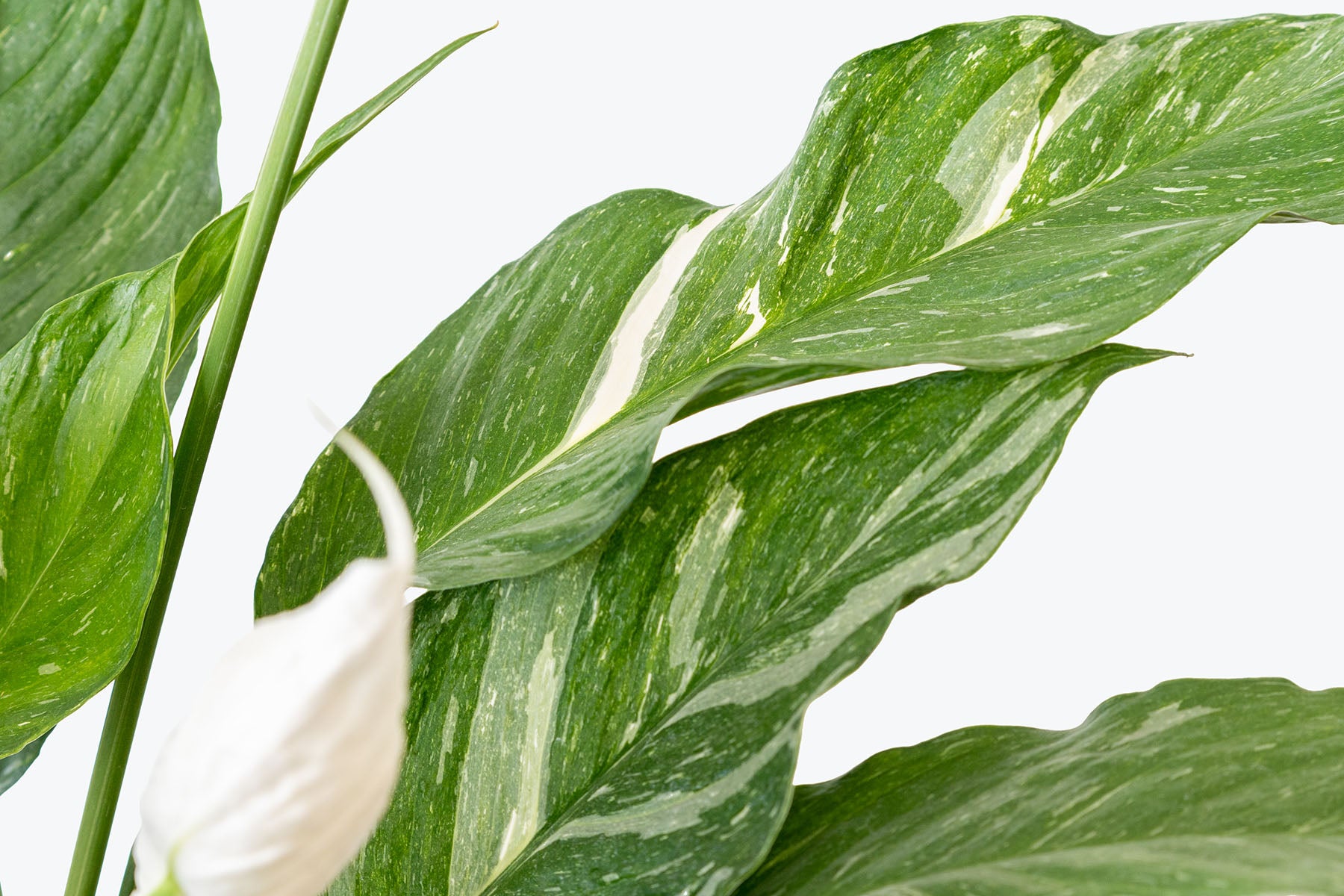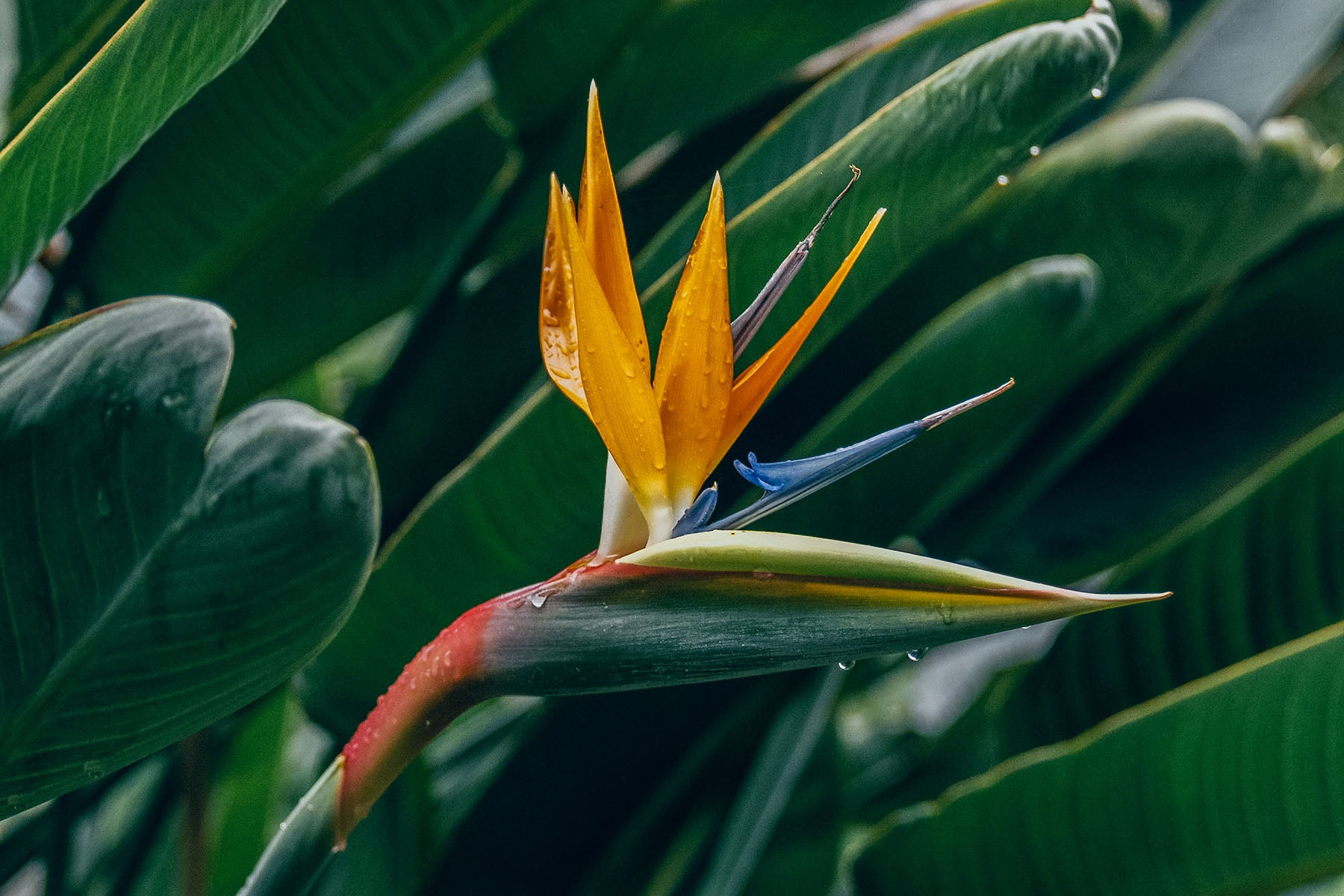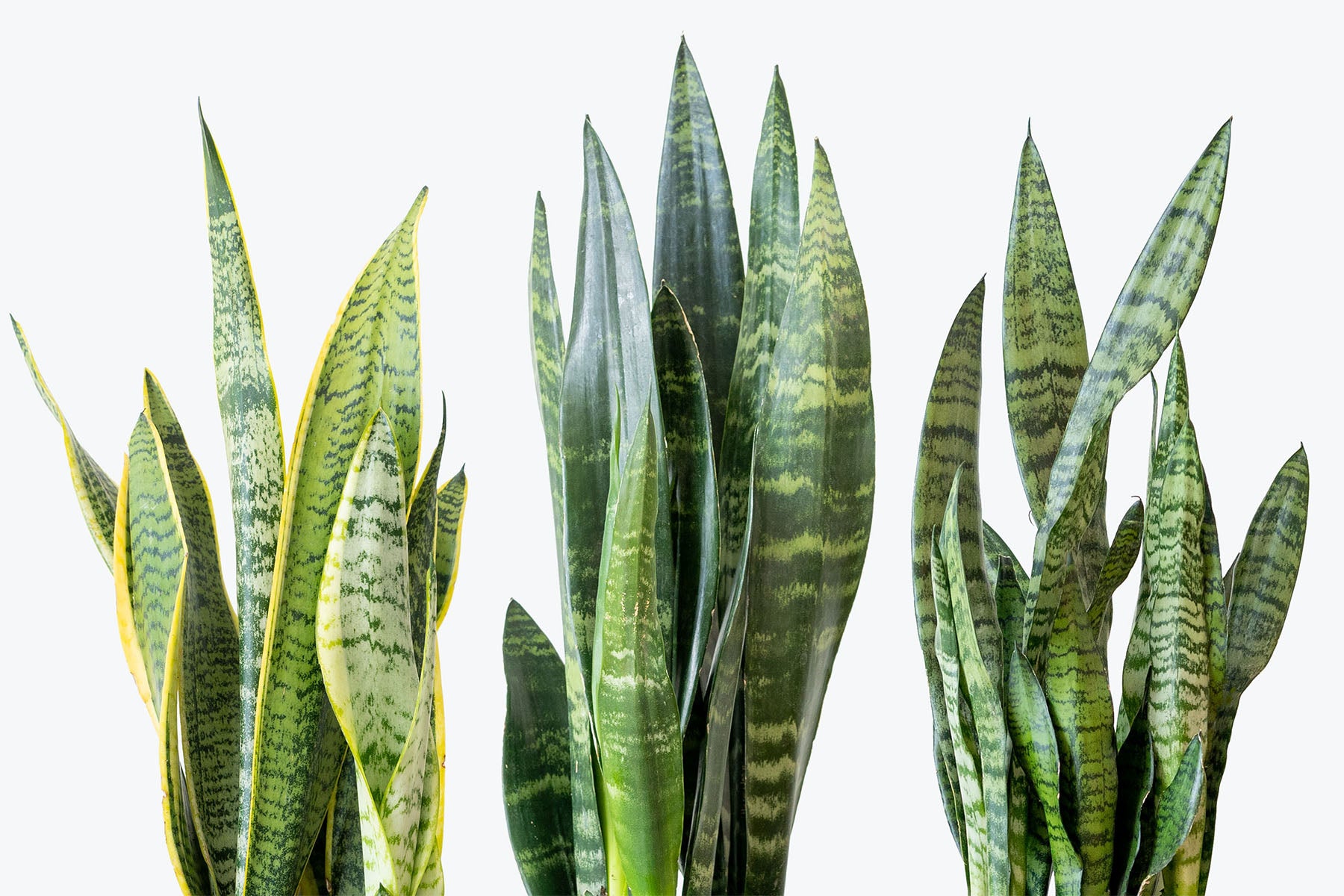
How to Take Care of Your Peace Lily
With its majestic, green foliage and stark, white flowers, the Peace Lily, or Spathiphyllum, is another great option for those low-light spaces. For beginner and experienced plant owners alike, this easy-care plant is a breeze, brightening up any corner of your home! Unlike other common low light plants, the Peace Lily has soft, delicate (only in looks) foliage, with gracefully arching leaves, rich in deep green colouring. They come in all sizes as well, some small enough to sit on a side table, and others suitable as larger floor plants, reaching heights of 3-4 ft.
△ 10" Peace Lily Sensation
An incredibly adaptable houseplant, its common name comes from those beautiful, white flowers protruding from the plant, giving the appearance of white peace flags. The blooms, which are actually specialized leaf bracts, or sheath-like leaves, that grow hooded over the spike of small flowers, or spadix, are also the source of its Latin name, where Spathiphyllum means "spathe-leaf." Not actually related to true lilies at all, they belong in the aroid family of Araceae, more closely related to Anthuriums, Philodendrons, and Alocasias.
Although these are definitely in the "easy-care" group of houseplants, the proper growing conditions are still incredibly important, as with any plant. We will cover everything you need to know though, so don't you worry! As tropical perennials, when you practice good care, these plants can live for years and years, flowering over and over in your home. There are quite a few varieties that exist, with slight changes between the foliage, but the most popular is the classic Peace Lily, as well as the Peace Lily 'Domino', which is a medium-sized variety with stunning leaves streaked with white variegation. The Spathiphyllum 'Sensation' is another impressive variety with huge, emerald green, textured leaves.
🎭
Fun fact about Peace Lilies: if you forget when you last watered your plant, they will certainly let you know! They have a telltale droop, where their leaves will droop dramatically if they are very thirsty. However, as soon as they get a drink, their leaves will start to perk back up almost immediately.
Known for their air-purifying capabilities, this popular houseplant was a part of NASA's 1989 Clean Air Study, where it was found that they are extremely efficient at breaking down and neutralizing toxic gases, such as carbon monoxide and formaldehyde. This neutralization is done inside the tropical plant's pores, filtering more indoor pollutants than most other plants, making them ideal for often-frequented rooms such as the bedroom, living room, or office space.
Light Requirements
When it comes to Peace Lilies, they can be placed almost anywhere in your home. The main thing that they cannot handle is prolonged, direct afternoon sun, as this will scorch their leaves. Although they can handle most light on the spectrum of indoor lighting, keep in mind that their growth habits will change depending on the light they are receiving. They will thrive in medium to bright, indirect light, but they can also tolerate lower light levels. However, low light doesn't mean no light and plants will only grow based on how much light they receive.
💡
Remember to dust off your plant's leaves every once in a while! This will allow the plant to perform photosynthesis effectively, as the dust will block some of the light that the plant should be receiving. This is especially important for plants that are in lower light areas. Gently wipe off the leaves using a soft, damp washcloth, or shower off the plant, avoid using leaf shine though as this will clog the pores on the leaves.
Generally, the lower light a Spathiphyllum receives, the higher the chances of their growth becoming either stunted or extremely leggy over time, meaning their leaves will be more spaced out and new growth less compact. In ideal conditions, the speed of growth is moderately quick. These are some things to keep in mind when you place your plant in dimmer settings, because, as with all plant growth, the speed and quality of that growth depend on how much light is received.
△ Peace Lily Leaves
Let’s outline the lowest light conditions that your plant can handle:
- A couple of meters from an East, West or South-facing window over
- A meter or so away from a North-facing window
- Next to a North, East, West, or South-facing window that is facing a courtyard or is blocked by a nearby building or tree
🌸
Let's talk flowers! Although Peace Lilies flower quite easily, it all depends on the light that they are receiving. Plants placed in lower light spaces will most likely not flower, primarily showing off their beautiful foliage, compared to plants placed in brighter light spaces, which have a much better chance! When they get the light they need to flower, they can produce 1-3 flowers at a time, each lasting for several months.
Now that we know your plant will need brighter light to potentially bloom, here are some brighter light conditions for your Peace Lily:
- Directly next to a North or East-facing window
- Next to, or close by, a South, Southwest, or West-facing window that has sheer curtains (only a couple millimetres thick) for some bright, indirect light (keep in mind, they cannot handle prolonged, direct sunlight so the curtains keep the leaves from getting burned)
- About a couple of meters away from a South, Southwest, or West-facing window without curtains
Bright, indirect light is ideal for Spathiphyllum but not essential, as your plant will be content almost wherever you place it! The deep, green colouring of their leaves means that the plant doesn't like too much strong light, as there is plenty of chlorophyll and leaf space to conduct photosynthesis. It is also a great idea to rotate your plant, no matter where it sits, as this will allow for even growth on all sides.
Remember that some leaf loss is completely normal, whether due to age or adjusting to lower light, so also consider that before worrying about every yellowing leaf. As long as there isn't a pest, watering, or extreme lighting issue, your plant is doing just fine!
Watering Requirements
Peace Lilies make it extremely easy to know when to water them, they certainly didn't receive their nickname of Drama Queens for nothing! As mentioned before, the moment they start getting thirsty, their leaves begin to droop or wilt quite dramatically. That being said, as soon as they receive their drink, their leaves will begin to perk right back up, not harming the plant at all.
△ 6" Peace Lily Domino
Rather than watering your plant on a schedule, which we always advise against as there are many factors that go into watering (i.e. light levels, time of year, humidity, etc.), keep an eye on your plant's leaves. They will generally need to be watered when the top couple inches of soil are dry, as they like consistently moist soil (not soggy), but again, the frequency will vary depending on your plant's environment. It is always safer to underwater, rather than overwater, as they are much more tolerant of dryer conditions and will not put up with waterlogged soil, which can lead to rotting roots.
🚿
Peace Lilies can be quite sensitive to tap water, as there are chemicals inside that water, such as fluoride, that can burn the foliage, or cause brown tips, overtime. Try switching to rainwater, distilled water, or let some tap water sit out overnight to allow the more harmful chemicals to evaporate out.
When it comes time to water, if your plant is in a darker corner, only give it a few cups of water, as you don't want to soak the soil and have your plant sitting in wet soil for too long in the dark. If your plant is in brighter light, water your plant fully, until there is water coming out of the drainage holes and the soil has absorbed the water. If the water seems to drain out right away, without absorbing, try bottom-watering instead:
- Fill up a bowl or saucer with water and place the nursery pot into it, letting the water soak up from the bottom holes in the nursery pot
- Once the top layer of the soil is moist, from the water sponging up
- Remove the plant from the bowl and let the excess water drip out before returning it to its decorative pot.
It is also important to always keep your plant in a pot with drainage holes, in case you ever give your plant too much water and need to dump it, you don't want your plant to sit in standing water. Even though it is better to give your plant less water rather than too much, seeing as they are able to tolerate drier soil for short periods, make sure to keep your watering rather consistent as leaf tips will begin to brown over time if the plant is often forced to go from one extreme to the other. Expect to water more often in the spring and summer months, since the days are brighter and longer, and less often in the darker winter months!
📋
When it comes to repotting, keep in mind that they prefer to be root-bound, and the frequency of repotting will depend on how much light they are receiving and how quickly they are growing. If the plant is drooping less than a week after watering, or the leaves are crowded/deformed, or the roots are taking up most of the container, for no other reason (such as pests or lighting issues), it is most likely time to repot! You can read all about how to repot in our step-by-step guide here.
Humidity
Although they can handle lower humidity, the wear and tear of dry air will begin to show on their leaves, through crispy tips or yellow edges. Be sure to keep them away from any drafts, such as cold windows in the winter, cold rooms, or any heating/air conditioning vents blowing air though. They are still a tropical plant so they won't do well being placed in a cool, dry area in the long run!
△ 6" Peace Lily
Even though they can survive in our basic home humidity, they love a warm, humid environment. If you are willing to spend the extra time and effort, here are some ways you can increase the humidity in the air around your Peace Lily:
- Mist your plant's leaves every day to increase the ambient humidity for a short period of time around the plant
- Place the nursery pot on top of a bed of rocks that are covered in water (this increases the humidity in the air around the plant)
- Invest in a humidifier to increase the overall humidity in the room (this will benefit any other plants you have as well)
Fertilizing
Peace Lilies have a fairly simple fertilizing schedule: feed every 6 weeks through the spring and summer months, and then hold off throughout the Winter. Although it is most common that plants in our Canadian homes really only grow throughout the Spring/Summer, sometimes plants produce new growth at other times of the year and we always like to fertilize at any signs of new growth. Any balanced houseplant fertilizer (such as a 20-20-20 one) that most greenhouses, garden centres, or plant shops offer will be fine! If you wish to fertilize more often, make sure the fertilizer is very diluted.
Toxicity
Since they are mildly toxic to both humans and pets, due to the calcium oxalate crystals that all parts of the plant contain, Peace Lilies are best kept away from children and animals. If ingested, and depending on how much, they can cause stomach and respiratory irritation, which can lead to possible vomiting. The juices from the plant can also irritate your skin, so make sure to use gloves when working with them or wash your hands right after handling them.
Common Pests & Problems
Keeping in line with their great reputation as houseplants, Spathiphyllum don't have too many problems when it comes to pests and other issues. That being said, even though most of these problems don't occur all the time, we still want to outline any possible issues you could experience while having them in your care:
Over-watering:
When the stems and leaves are yellowing or mushy, with leaves dying often, you are most likely experiencing a watering issue, where the soggy soil has caused the roots to rot. If the problem isn't too bad, hold off on watering as we state above. If there is too much damage, remove some soil from the root ball, gently trim any rotted roots off with clean shears, and repot your plant into fresh, dry soil, following our watering guidelines.
Under-watering:
When the leaves on your plant get droopy often, or curl up and turn crispy (not due to bugs or age), this may be a sign that you are under-watering. Increase your watering little by little until your plant is content and showing healthy signs like new growth or upright leaves.
Brown tips & edges:
If this is not due to a watering or age issue, the air around your plant could be too dry, your plant could be receiving too much direct sun, or the water you are using may be burning it. Check our watering, humidity, and light guidelines above to change whatever is necessary.
Brown spots:
If these aren't occurring from your plant getting too much water, it may be receiving too much fertilizer. Flush the soil with water and hold off fertilizing for a few months, then follow our fertilizer guidelines above.
No flowers:
When a Peace Lily doesn't receive enough light, it won't produce a lot of flowers. Move your plant to a location that receives brighter light and make sure to keep it root-bound, this gives plants a sense that they are trapped and can no longer grow, so they will try to reproduce via their flowers. If your plant is in a bright location, increase how often you fertilize to encourage flowers (try using a fertilizer with higher amounts of phosphorous).
Green flowers:
Green or weak flowers generally occur from improper fertilizing. Cut back on how often you are fertilizing as your plant may be receiving too much fertilizer prior to blooming.
Pests:
Peace Lilies can be prone to fungus gnats, spider mites, or thrips, as any pest will happily take up residence on a plant if given the opportunity. A thorough wipe-down of leaves with soapy water or insecticidal soap can be effective at stopping them, though repeated applications will be necessary. You can see all of our guides to getting rid of pests here.
With all that being said, Peace Lilies are a great addition to your home because they are incredibly strong, lower light plants and they are a breeze to take care of, just don't forget to water them as they won't hesitate to show their dramatic side.










